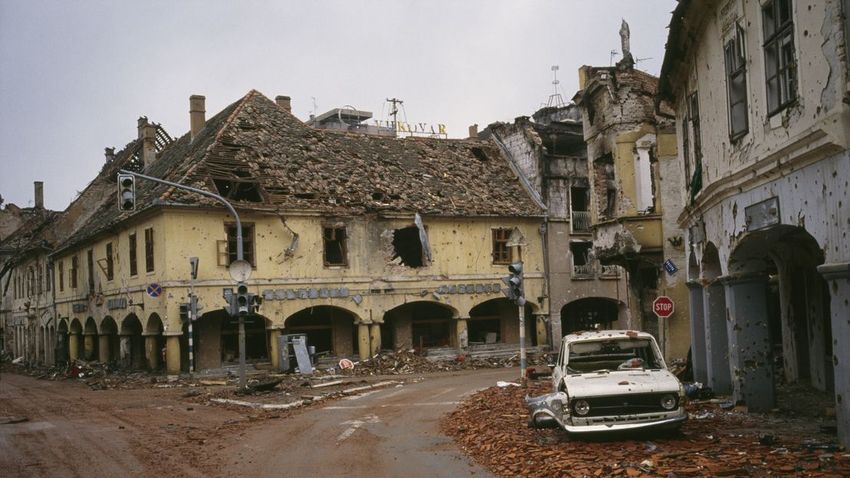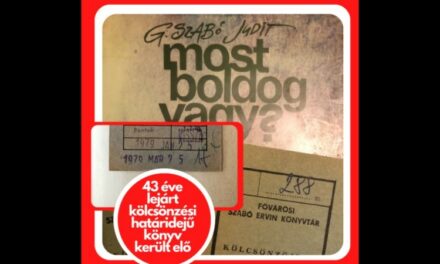Placing today's war in Ukraine in geopolitical processes is not possible without understanding the disintegration of the Soviet bloc.
Because the system of international relations formed between 1945-55 - the UN, NATO and the Warsaw Pact - fell into a vacuum with the system changes and the end of the bipolar world. The United States wanted to use Moscow's weakening to increase its own sphere of influence, in which the UN Security Council, which had been a key player until now, became an obstacle, as Moscow was able to block American ideas with its counter-vote in the council. Similarly, NATO lost its original function, since there was no longer a threatening bloc, the Warsaw Pact fell apart, so a new purpose had to be found for NATO. One step in this was the war in Kosovo.
With the end of the South Slavic War (1991–1995), the border of Little Yugoslavia was fixed, which included Serbia with the member republic of Montenegro, as well as the two autonomous territories, Vojvodina and Kosovo. This system was still the legacy of Tito's Yugoslavia, but at the same time, the territory under the control of the Serbs remained mixed.
As an Albanian-majority territory, Kosovo wanted to become independent, like the former Yugoslav member states, but this was rejected by the Serbs all the way. The reasons for this are rooted in Serbian history and public consciousness: Kosovo is an important area of the birth of the Serbian nation and its medieval statehood. Here is the "Serbian Esztergom", Pec (Peja/Iperk), whose monastery became the seat of the Serbian Orthodox Archdiocese, here is the Serbian "Székesfehérvár", the city of Prizren, which was the Serbian royal seat in the 14th century, then during the Turkish conquest after the ethnic changes that took place, it became the center of the Albanian independence movements in the 19th century. The Serbs' Mohácsa and Rigómező are also located in Kosovo, where the Turks defeated the medieval Serbian state in 1389. It is understandable that the Serbs do not want to let go of the important sites of their history, but at the same time, the nationality ratio now shows a significant majority of Albanians.
In Tito's Yugoslavia, Kosovo was not a member state, but was an autonomous province of Serbia, similar to Vojvodina. This autonomy was essentially abolished by Yugoslav President Milošević with the constitutional amendment of 1989, as a result of which the Kosovar Albanians organized protest actions. The Serbian central government responded by imposing a state of emergency, which made the situation even worse.
The Kosovo Albanians did not launch an open armed uprising during the Yugoslav war, but declared their independence in 1992 under the leadership of Ibrahim Rugova. This was not recognized by anyone outside of Albania, but with the support of the Western Albanian diaspora, the formation of an Albanian shadow state began. The Kosovar Albanians were confident that the issue of Kosovo would also be put on the agenda at the end of the South Slavic war, and independence from Serbia would become possible.
Kosovo was not included in the Dayton Agreement that ended the war, and then in the peace treaty signed in Paris (1995), which caused general disappointment.
This meant the failure of passive resistance until then. As a result, the group of supporters of the armed uprising became stronger, and thus a suitable social background was created for the anti-Serb actions of the Albanian paramilitary Kosovo Liberation Army (UCK).
However, the more serious arming of the paramilitary group took place only after the collapse of the Albanian pyramid scheme (1997), when, parallel to the collapse of the Albanian state, a large number of small arms were lost and found their way to the UCK through unknown channels. As a result, the guerrilla group's actions became more and more successful, they attacked Serbian policemen and soldiers and brought more and more parts of Kosovo under their control. Milošević acted forcefully, and a situation of civil war arose.
As a result, the UN Security Council (UNSC) issued Resolution No. 1199 on September 23, 1998, which was adopted with 14 votes in favor of China's stay. The resolution called on the Serbian and Albanian parties to immediately cease hostilities and start negotiations. At the same time, he aimed to improve the humanitarian situation.
The Holbrooke-Milošević oral agreement (October 13, 1998) tried to settle the expectations contained in the UN Security Council resolution, when US President Bill Clinton's special envoy put pressure on the Serbian leader for a peaceful resolution of the conflict with international assistance. The most important points of the agreement were the admission of OSCE observers and NATO airspace monitoring. As a result of the agreement, the Serbs signed a cease-fire with the Albanians, but the situation did not improve, and in January 1999, the UCK captured Serbian soldiers. They didn't treat them well, but they let them go. In response to this, the Serbs killed 45 Albanians in the settlement of Racak on January 15, 1999.
This carnage changed the balance of power in American foreign policy: the negotiated settlement represented by Holbrooke took a backseat to the view represented by American Secretary of State Madeleine Albright, who intended to overthrow Milošević's power even with armed force. It is clear that on December 1, 1998, his spokesman called Milošević no longer part of the problem, but the problem.
At the same time, in the fall and winter of 1998, the Kosovo Liberation Army continued its actions against the Serbian public administration, primarily the police, which the Serbs immediately retaliated against. They wanted to prevent further deterioration of the situation with the Rambouillet conference (February 6-23, 1999), in which Milošević once again only participated under great power pressure. The Albanian and Serbian delegations did not meet at the conference, but neither side was enthusiastic about the Western proposal. The Albanians were disturbed by the lack of independent Kosovo, the Serbs by the planned NATO presence in Kosovo (26,000 soldiers). At the same time, American diplomacy made several concessions to the Kosovo Albanians: it presented NATO's intervention plan and offered to hold a referendum on their independence in three years. Despite this, the Albanians only signed the peace proposal shortly after the deadline and only conditionally, with the cry that they would negotiate with the Albanians. The Serbs did not sign the proposal, but urged further negotiations.
Already during the negotiations, they tried to put pressure on the Serbian delegation with the possibility of NATO airstrikes, and the organization of NATO forces also began. The USA has announced that it is willing to send a military contingent of between 2,400 and 4,000 people to Kosovo. This number soon rose to 10,000.
The last round of negotiations began on March 15, 1999 in Paris. At that time, the Albanians signed the proposal, but the Serbs were not willing to do so, but asked for a number of amendments. The conference was a failure, the impossible conditions were not accepted by the Serbs. Although Holbrooke made one last attempt to convince Milošević, it was also unsuccessful.
During the negotiations, the House of Representatives of the American Parliament authorized (219:191) the president to send American troops to Kosovo as part of NATO. This was later expanded to carry out airstrikes and missile attacks. The superpower's determination to intervene was clearly demonstrated by President Clinton's statement at a press conference that the Kosovo conflict threatens American interests. He also drew attention to the fact that if NATO had not acted, there would have been more carnage in the region.
The Serbian regime tried to create a ready situation, and to this end, they began to expel the Albanian population from Kosovo in the context of Operation Horseshoe. The operation got its name from the shape of the operational directions: the Serbian units attacking in a semicircular arc tried to drive the Albanians from the area to Albania by exerting pressure in a southwest direction, thereby reducing their ethnic weight. At the same time, the international observers were recalled, which foreshadowed the imminent start of airstrikes.
As a last attempt, Holbrooke traveled to Belgrade to personally convince Milošević to withdraw the Serbian troops, but his mission ended in failure. At that time, NATO was fully prepared for intervention, and NATO ambassadors authorized NATO Secretary General Javier Solana to launch the attacks. The preparations for the airstrikes had already begun, since in accordance with the Holbrooke-Milošević agreement, the Serbian fighter jets did not attack the American reconnaissance AWACS planes, so NATO was able to obtain a lot of important information. At the same time, this was not considered a gesture by the Serbian system.
At 8:00 p.m. on March 24, NATO airstrikes began against Little Yugoslavia. The attacks were carried out by the grouping of the NATO Allied Force, which initially consisted of 214 (of which 112 were American), and at the end of the operation 535 (323 American) strike aircraft - dropping bombs and launching air-to-ground missiles. The total number of the air fleet exceeded 1,000 planes, this contingent was provided by 13 NATO member countries. In contrast, the Serbs had 180 aircraft, of which only 18 could be said to be modern (MIG-29). In connection with this, it is important to note that the Serbian air defense was also outdated, as its backbone was formed by Cold War Soviet weapons.
The NATO operation consisted of two phases: in the first (24/03 – 27/03) the Yugoslav air defense was smashed, while in the second (27/03 – 10/06) the aim was to destroy the Serbian army and military infrastructure .
During 78 operational days (11 weeks), NATO carried out 37,000 missions, of which 14,000 were strikes. 90% of these were carried out by units belonging to the US Air Force. The US Air Force (USAF) also deployed its most modern aircraft, including the F-117 stealth fighter-bomber, the B-2 stealth bomber, the E-2C Hawkeye reconnaissance and tracking aircraft, the Predator reconnaissance robotic aircraft, and the Tomahawk strike maneuvering aircraft. robot airplane. The use of so-called smart bombs with laser and electro-optic control was severely limited by the foggy and cloudy weather in the region, so after the first days, conventional bombs were used instead. Cluster bombs were also deployed.
Overall, the operations destroyed 80% of the air force and air defense, 100% of the oil refineries, and 50% of the military industry. At the same time, the transport infrastructure was also hit by very serious attacks: 11 railway and 29 road bridges were destroyed (including 7 Danube bridges), 115 hospitals and clinics were damaged.
Nevertheless, NATO did not achieve the desired political success. They believed that the Serbian leadership would accept the peace terms as a result of the bombings of the first days. Instead, however, the Serbian population stood by Milošević, and the Yugoslav army used the well-proven secret warfare method of the Second World War. They took advantage of the topography and the weather and tried to assert their local superiority over the Albanian population, expelling as many Albanians as possible from Kosovo, which resulted in the escalation of the Serbian-Albanian conflict. To prevent this, NATO switched to the second stage of the intervention, when the goal was specifically to destroy the Serbian army.
The best description of this phase of the operation was given by US President Bill Clinton himself: "If Milošević refuses peace, we will prevent him from waging war." At the same time, this statement is also an admission of NATO's failure, since NATO did not achieve its primary political goal, the prevention of ethnic cleansing in Kosovo.
In the second phase, the political goals were also changed: the overthrow of Milošević's regime appeared as the goal, which is why they repeatedly attacked the civilian population and infrastructure, including the electricity and water supply. For the first time, graphite bombs were dropped, which cause short circuits in electrical systems, leaving about one million people without power.
The NATO airstrikes ended in a compromise. Milošević agreed to withdraw his forces from Kosovo and accepted the control of Kosovo by international militias. Based on this, NATO suspended the bombing on June 10, 1999, and parallel to the withdrawal of the Serbian forces, the international KFOR forces, which included Russia, took over control of Kosovo.
NATO officially ended the operation on June 20, 1999, which did not achieve its political goal: Milošević remained in power, and Kosovo continued to exist as part of Yugoslavia. As one Western journalist put it:
"We failed to bomb Yugoslavia into a democracy."
The situation of Yugoslavia and Kosovo was settled by UN Security Council Resolution No. 1244. According to the document, a total of 230,000 Albanians were driven out by Serbian forces during the conflict, while 50,000 fled from NATO strikes. It must be possible for them to return, as well as an end to hostilities on both sides, the decision stipulated. To ensure this, international forces arrived in the area, and at the same time the territorial integrity of Yugoslavia was confirmed by the Security Council.
At the same time, NATO's intervention in Yugoslavia raises many questions. The first is an international legal question: what can the Kosovo conflict be considered? Local unrest, rebellion, non-international armed conflict, civil war? In the case of Kosovo, it is very difficult to decide: in the initial stage, it could be classified as a local riot, in which two groups belonging to different ethnic groups faced each other. Weapons from Albania made the situation even more complicated. In any case, Little Yugoslavia regarded the emerging situation as a local riot, which falls under the jurisdiction of the internal justice system.
If we consider the events as a civil war, since the Albanians wanted to secede from Little Yugoslavia, then according to the Wiesbaden Protocol of 1975, military intervention of any kind is prohibited, unless authorized by the UN. The purpose of this is to prevent local, internal conflicts from escalating and from turning into international conflicts. In other words, no one can provide either side with help influencing the final outcome of the civil war until authorized by the UN.
The question arises on what basis NATO intervened in the conflict.
NATO was created in 1949, with a declared defense purpose. In the 1990s, with the dissolution of the Soviet Union and the end of the Cold War, this function was not and is not considered particularly important today. However, the organization did not disintegrate because it provided both the United States and its member countries with significant benefits beyond protection. It offered the Americans the opportunity to have a say in European affairs through their European allies, and it provided European members with secure protection at little expense. With the dissolution of the Soviet bloc and the Warsaw Pact, new goals and functions had to be formulated for the public in order to justify the operation of the organization.
The discourse on the future role of NATO was accelerated by the first Gulf War (1991), which was not a NATO operation, but twelve member states led by the United States participated in it. NATO's mandate has shifted from deterrence to crisis management:
"Among the threats to the alliance, a premeditated attack on allied territory is less likely than the adverse consequences of instability, which may arise in the wake of severe economic, social and political difficulties, including ethnic strife and territorial disputes, which many Middle and Eastern countries face -a European country is facing."
Accordingly, in 1992, at the suggestion of the Netherlands, NATO offered its services to the European Conference on Security and Cooperation. This was later offered to organizations under the scope of the UN Security Council. With this step, however, the existing international conflict management structure was called into question, since until now only the UN Security Council had the right to decide on international intervention. And such a decision - arising from the operation of the BT - could only be made if all major powers agreed with it. This consensus came to an end with NATO's offer.
The timing of the offer was no accident: in August 1991, an attempt was made to replace Gorbachev, and Russia sank into an internal political crisis. There was one superpower left in the world, the United States, which was able to exert its influence on world events through NATO more than in BT, as Russia and China, which had the right to consent, were able to limit it there.
The possibility of bypassing the UN is clearly demonstrated by the speech of the US Secretary of State at the NATO summit in Washington in December 1998. Madeleine Albright emphasized:
"Bosnia and Kosovo are the latest examples of how NATO can act to protect its interests in the event that a conflict arises at the alliance's immediate borders. The new NATO concept must find a balance between the central role of common defense and the management of crises like the one in Bosnia. Together, we must develop the alliance's resilience and capabilities to prevent, deter, and, if necessary, respond to any conceivable threat. […] The Kosovo crisis shows how European defense forces can facilitate the implementation of NATO missions. [...] NATO sent a force of European origin to the observers of the Organization for Security and Cooperation in Europe, who were sent to the problem area. The force is under NATO command and based on reliable European capabilities.”
It is therefore no coincidence that the NATO action in Kosovo did not have a UN mandate, which would have been unthinkable during the Cold War.
NATO, celebrating its 50th anniversary, did not respect its own defense principles or the UN Charter when it attacked Little Yugoslavia. The second article of the UN Charter specifically prohibits attacking a sovereign country, as long as that country does not commit aggression against another country. As a sovereign country, Little Yugoslavia did not commit aggression against any other sovereign country, and was even particularly patient, since the Kosovo Liberation Army did not attack Albania due to its strong support from Albania.
The US-proclaimed genocide in Kosovo did not hold up in 1998 either. When the issue of Kosovo was raised in the US Senate, there were barely 80 dead in total. This number later, during the negotiations, increased by 300 dead, but most of them were Serbs. The ethnic cleansing started as a result of the NATO bombing, i.e. the intervention did not prevent it, but provoked it.
In addition, the conflict was sparked by the Albanians, and for them even then, gaining autonomy was not a real goal, but they wanted to achieve independence. During the negotiations, the Westerners did not comply with the Convention on the Law of International Treaties, which prohibits pressure to sign a treaty.
All in all, it can be said that the weakening of Yugoslavia and the eventual independence of Kosovo were not foreign to American diplomacy. In this way, he was able to weaken the traditionally pro-Russian Serbian state and integrate the new countries that won their independence against the former Soviet sphere of interest into his own sphere of interest and into his federal system. Which the newly independent countries were willing to do, hoping that the United States would guarantee their security and independence.
At the same time, the United States could only take advantage of the loss of Moscow's superpower status by bypassing the UN, since Moscow could assert its interests only through its counter-vote in the Security Council and its nuclear weapons. Maybe things have changed since then.
Featured image: Bombed Vukovar in the Yugoslav War / Antoine Gyori – Corbis/Getty Images Hungary













